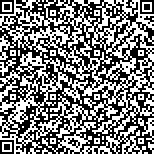| 引用本文: | 袁秀堂,杨红生,周毅,毛玉泽,张涛,刘鹰.盐度对刺参(Apostichopus japonicus)呼吸和排泄的影响.海洋与湖沼,2006,37(4):348-354. |
| |
|
| |
|
|
| 本文已被:浏览 2348次 下载 0次 |

码上扫一扫! |
|
|
| 盐度对刺参(Apostichopus japonicus)呼吸和排泄的影响 |
|
袁秀堂1,2,3, 杨红生1, 周毅1, 毛玉泽1, 张涛1, 刘鹰1
|
|
1.中国科学院海洋研究所 青岛266071;2.中国科学院研究生院 北京100039;3.国家海洋环境监测中心 大连116023
|
|
| 摘要: |
| 采用封闭式呼吸器法研究了(15±0.5)℃水温条件下不同盐度(22、27、31.5、36)对四种规格刺参{S[(39.60±8.77)g]、M[(71.80±14.04)g]、L[(128.30±19.69)g]和XL[(196.65±19.81)g]}呼吸和排泄的影响。结果表明,各规格组刺参单位体重耗氧率[Rwr,μg/(g?h)]和排氨率[(Rwe,μg/(g?h)]在盐度22—31.5范围内均随着盐度的升高而降低,当盐度升高至36时,二者都明显升高; 各盐度下实验刺参的单位体重耗氧率分别为17.52、16.32、15.49和17.60 μg/(g?h),单位体重排氨率分别为1.05、0.88、0.87和0.95μg/(g?h); 在同一盐度下,刺参体重越大,其单位个体耗氧率[Rir,μg/(ind?h)]和排氨率[Rie,μg/(ind?h)]越高,二者呈幂函数关系,可用关系式Rir(或Rie) =aWb表示;关系式Rir=aWb中,a值的变动范围为40.6656—81.1900,b值为0.6432—0.8145;而关系式Rie=aWb中,a值的变动范围为2.0947—4.8489,b值为016507)018072;盐度对刺参O:N比的影响不显著,各盐度条件下,不同规格的刺参,其O:N比均在15左右,表明本实验条件下该参代谢所需要的能量主要由脂肪和碳水化合物提供。从呼吸和排泄的角度来看,刺参在其最适温度(15°C)条件下,具有一定的渗透压调节能力,能够适应较广的盐度变化范围(22-36)。 |
| 关键词: 刺参 盐度 体重 呼吸 排泄 |
| DOI: |
| 分类号: |
| 基金项目:国家重点基础研究规划项目(973),G1999012012号;国家自然科学基金资助项目,40576073号 |
附件 |
|
| SALINITY EFFECT ON RESPIRATION AND EXCRETION OF SEA CUCUMBER APOSTICHOPUS JAPONICUS (SELENKA) |
|
YUAN Xiu-Tang1,2,3, YANG Hong-Sheng1, ZHOU Yi1, MAO Yu-Ze1, ZHANG Tao1, LIU Ying1
|
|
1.Institute of Oceanology, Chinese Academy of Sciences, Qingdao, 266071;2.Graduate School, Chinese Academy of Sciences, Beijing, 100039;3.National Marine Environmental Monitoring Center, Dalian, 116023
|
| Abstract: |
| Apostichopus japonicus (Selenka) is a member of Echinodermata, Holothuroidea, an epibenthic, temperate species inhabiting along Asian coasts. As a sediment-feeder and bio-scavenger, A. japonicus ingests organic matter in sediment, including bacteria, protozoa, diatoms, and plant and animal pieces, and re-utilizes residual food and faeces. Therefore, it is an important in situ bioremediation species in a marine culture system.
Water salinity in culture pond of sea cucumbers changes significantly, which causes stress to A. japonicus and arouses different responses in its respiration and excretion systems. This paper deals with the effect of salinity on respiration and excretion in the sea cucumber of different sizes. Under controlled condition of ambient water salinities 22, 27, 31.5 and 36 at water temperature of (15±0.5) °C, the weight specific respiration rate [Rwr, μg/(g?h)] and the weight specific excretion rate [Rwe, μg/(g?h)] of A. japonicus in four body sizes groups (mean±SD)—S[(39.60±8.77)g], M[(71.80±14.04)g], X[(128.30±19.69)g] and XL[(196.65±19.81g)]—were determined, respectively. The experimental results were as follows: (1) at salinity 31.5, the animals respired and excreted at a lower rate, and the rates increased in higher (36) or lower (27 and 22) salinities. The mean values of Rwr at above various salinities were 17.52, 16.32, 15.49 and 17.60 μg/(g?h) respectively, while those of Rwe were 1.05, 0.88, 0.87 and 0.95 μg/(g?h) respectively; (2) the regressive equation between body weight and individual respiration rate [Rir, μg/(ind?h)] could be described as Rir=aWb, and the ranges of a and b values were 40.6656–81.1900 and 0.6432–0.8145 respectively; the regressive equation Rie=aWb could describe the relationship between the body weight and individual excretion rate [Rie, μg/(ind?h)], and the values of a and b ranged 2.0947–4.8489 and 0.6507 –0.8072, respectively; (3) salinity had no significant effect on O:N ratios (P>0.05), and the values of O:N ratios were 15.66±2.37 (mean±SD), indicating that the sea cucumbers in our test conditions utilized mainly carbohydrate and lipid as its energy sources. Results indicated that the sea cucumbers could tolerate a wide range of salinity, and also have the ability of osmoregulation that was optimized at temperature of (15±0.5) °C. |
| Key words: Sea cucumber Apostichopus japonicus, Salinity, Body weight, Respiration, Excretion Sea cucumber |
|
|
|
|
|
